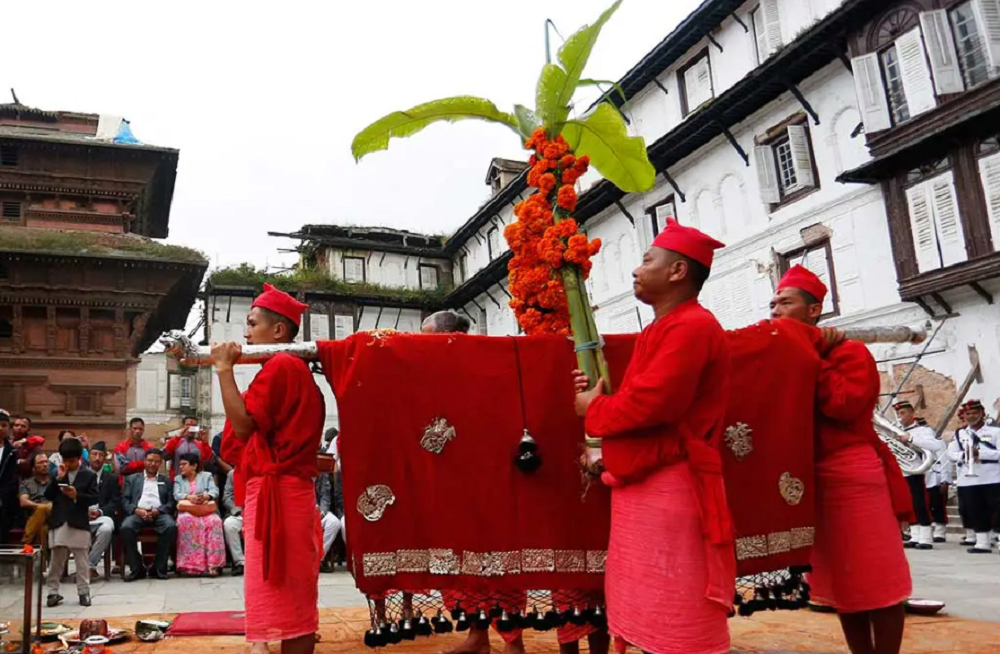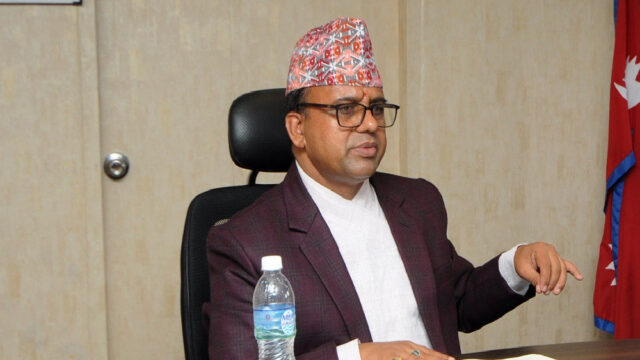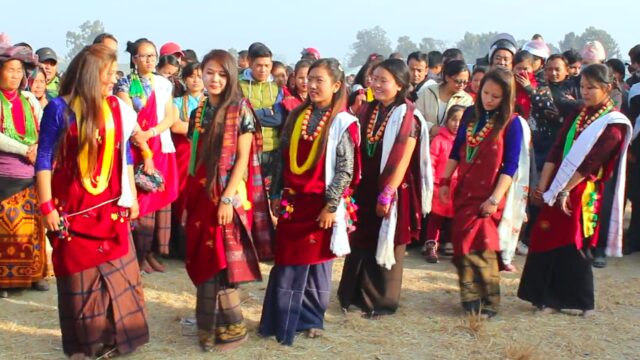Today, on the auspicious occasion of Ashwin Shukla Saptami, households across Nepal are welcoming the traditional Fulpati, a key event in the Navadurga and Dashain celebrations. The Fulpati ceremony marks the arrival of sacred plants and flowers into homes and temples, symbolizing the divine energy of Durga and her nine forms, bringing blessings to families during the Dashain festival.
Each year, Fulpati is celebrated on the seventh day of the Dashain festival. Sacred items like sugarcane, turmeric, banana stalks, paddy stalks, bel leaves, pomegranate, jayanti, ashoka flowers, and manavriksha are brought into homes as symbols of good fortune. These items, collectively known as ‘Navapatrika,’ represent nine goddesses who assist the goddess Durga. The ritual, performed according to Vedic traditions, is a key part of the Dashain festivities.
Former Chairperson of the Nepal Panchanga Nirnayak Vikas Samiti and religious scholar Dr. Ramchandra Gautam explained the significance of the plants: “Each plant in the Navapatrika represents a different deity – the banana symbolizes Brahmayani, pomegranate stands for Rakta Dantika, paddy for Lakshmi, turmeric for Durga, manavriksha for Chamunda, sugarcane for Kalika, bel leaves for Shiva, ashoka flowers for Shokarahita, and jayanti for the goddess Kartiki. These deities are considered the assistants of the nine forms of Durga.”
Following the Fulpati ritual, the nine goddesses are worshipped with great reverence, continuing the devotion and strengthening the connection to Durga’s power. Dr. Gautam added that no specific auspicious timing is required for the Fulpati ceremony, making it accessible for all to participate at any time on this day.
The Fulpati brought to the Hanuman Dhoka Durbar’s Dashain house in Kathmandu follows a long-standing tradition. Fulpati is carried from Gorkha to Jamal by six representatives of the Magar community. From Jamal, it is ceremonially brought to Hanuman Dhoka with a grand procession involving government officials, cultural dances, and traditional music.
Before the establishment of the republic, the King would participate in the Fulpati ceremony as the head of state. However, in the republican era, the Minister of Culture now represents the government at the ceremony, according to the Hanuman Dhoka Durbar Museum Development Committee.
The Dashain festival, which begins with the planting of jamara on Ghatasthapana, gains momentum with the Fulpati ceremony. Today, the festive atmosphere grows as government offices begin their holiday, allowing families to return home and prepare for the main Dashain festivities, including receiving tika and blessings from elders.
In villages across Nepal, swings such as ‘lingey ping’ and ‘rote ping’ are set up in public spaces, adding to the joy and celebration of Dashain.
Source: RSS






